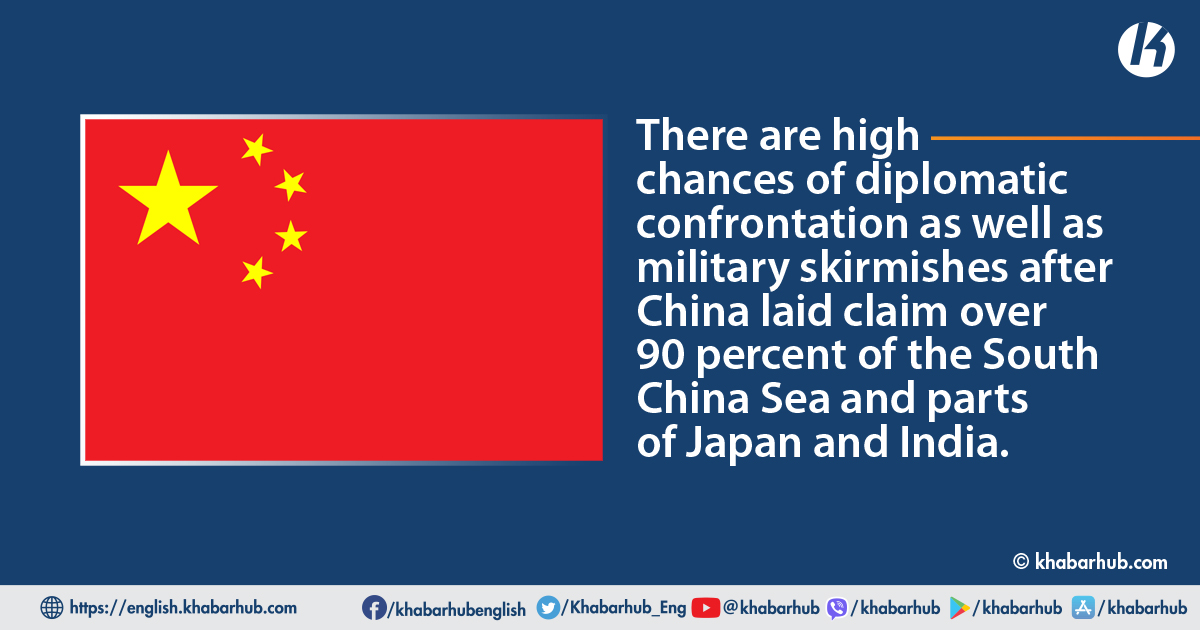Beijing’s decision to release a new map that claims sovereignty over areas of its neighbors is set to flare up clashes in the Indo-Pacific region.
The latest Chinese action has rattled the ASEAN countries as well as China’s Asian rivals Japan and India.
There are high chances of diplomatic confrontation as well as military skirmishes after China laid claim over 90 percent of the South China Sea and parts of Japan and India.
ASEAN countries are likely to side with the US amidst Sino-American friction.
There have been diplomatic efforts in the recent past to douse tension between China and its neighbours.
However, the new Chinese map seems to be undoing the progress made through talks.
Donald Rothwell, a professor of law at the Australian National University, said the new Chinese map is going to aggravate the conflict as the Chinese armed forces “will seek to assert Chinese sovereignty and jurisdiction based on the map.”
Taking a route of direct confrontation, the ASEAN block has vowed to confront Beijing as their boats and vessels are blocked in their territories by the Chinese naval forces.
Philippine President Ferdinand Marcos Jr. expressed anguish over the Chinese coast guard using a water canon to block its supply boat.
“We do not seek conflict, but it is our duty as citizens and as leaders to always rise to meet any challenge to our sovereignty, to our sovereign rights, and our maritime jurisdictions in the South China Sea,” he told fellow ASEAN leaders.
Malaysia cleared that it does not recognize the Chinese claims in the South China Sea as shown in the new map.
“The map has no binding effect on Malaysia,” its foreign ministry said. Taiwan too shot down Chinese claims and asserted that the map “cannot change the objective fact of our country’s existence”.
China’s so-called nine-dashed line shows over 90 percent of the South China Sea under its jurisdiction, which overlaps into the maritime zones of ASEAN nations.
Permanent Court of Arbitration in The Hague has rejected China’s nine-dashed line theory.
Yet, Beijing continues to assert its claims. India has lodged its protest in strong words as its minister of external affairs S Jaishankar called Chinese action “absurd”.
These Asian neighbours had decided to make efforts to expedite “disengagement and de-escalation” on the Himalayan border where both countries had clashed resulting in deaths of military personnel in 2020.
The release of a new map showing parts of India as China’s territory is likely to derail these efforts, New Delhi feels.
“We reject these claims as they have no basis. Such steps by the Chinese side only complicate the resolution of the boundary question,” it said.
Indian Prime Minister Narendra Modi is expected to take strong action amid growing domestic pressure against Chinese action.
Seeking strong action from Modi, opposition leader Mallikarjun Kharge said “China is a habitual offender when it comes to renaming and redrawing maps of territories belonging to other countries.”
Now, India has begun military drills in border areas apparently to convey its message to China.
Japan too has expressed objections over China showing the Senkakus (or the Diaoyu) islands in the newly issued maps.
Japan’s Chief Cabinet Secretary Hirokazu Matsuno called the Senkakus islands “indisputably an inherent part of Japanese territory” and vowed to protect it.
This fuels military confrontations in the East China Sea. The military conflict in the Taiwan Strait due to the standoff between China and the US-led west block is set to aggravate as ASEAN countries and India and Japan are likely to protect their territories from Chinese aggression.
It may cause the ASEAN countries to join or support the ongoing military drills led by the US in the South China Sea as well as drive India to increase its military presence on the China border.
Filipino President Marcos has demanded China remove “coast guard militia vessels” from its territory.
The Philippines has already started joint military drills with the US Navy in the South China Sea.
It even boosted defence ties with Australia, a rival of China in the Indo-Pacific.
Australian Prime Minister Anthony Albanese spoke about strengthening cooperation with the Philippines on regional and national security.
Even neutral Indonesia is likely to shift to the US-led group due to China’s growing hegemony.









Comment